




For centuries, native peoples lived across the vast expanse that would become the United States of America. In the early 17th century, settlers moved from Europe to the “New World” and established colonies , displacing the native peoples. European nations came to the Americas to increase their wealth and influenc over world affairs. The Spanish were among the first Europeans to explore the New World and the first to settle in what is now North America. By 1650 however, the English had become the dominant presence on the Atlantic coast.
The settlers fought for their independence from Britain in the late 18th century and formed a union of states based on a new constitution . The nation continued to expand westward and although the country is still a young nation, it has become a global power since declaring independence from Britain on July 4, 1776.
Today’s America has its roots in the English colony established in Jamestown, Virginia in 1607, and has been shaped by the major events in its history: War against the British, westward expansion , slavery and abolition , the Civil War, the Great Depression and the post-war boom . This section will guide us through the major events and characters in American history to help us understand these events and how they relate to the America we know today.
Pre - colonial America
Known to some indigenous people as “Turtle Island”, the first people to reach North America came from Siberia. Many thousands of years before Christopher Columbus’ ships landed in the Bahamas, the nomadic ancestors of modern Native Americans hiked over a “land bridge” from Asia to what is now Alaska more than 12,000 years ago. No one knows how many people lived in what is now the USA before European settlement , estimates range from two to 50 million. There were many distinct peoples with different ways of life in regions such as the Arctic (Inuit), the Plains,the Southwest, California, and the Northwest Coast. There were hundreds of tribes with more than 300 languages and there is evidence of significant prehistoric cultures such as the Puebloans who lived on the Colorado Plateau and whose cliff dwellings still survive
However, the cultures of the Great Plains have come to epitomize “Indians” in the American imagination, partly because they put up the longest fight against westward expansion. Before the arrival of European traders and explorers, the area was settled by hunters and farmers. After European contact, and especially after Spanish colonists brought horses to the region in the 18th century, the peoples of the Great Plains became much more nomadic. Groups like the Crow, Blackfeet, Cheyenne, Comanche and Arapaho used horses to follow great herds of buffalo across the prairie . The most common dwelling for these hunters was the teepee , a bison-skin tent that could be folded up and carried anywhere.
As white traders and settlers moved west across the Plains region, they brought many damaging things with them: goods like knives and kettles, which native people came to depend on; guns; and disease. By the end of the 19th century, white sport hunters had nearly exterminated the area’s buffalo herds.With settlers building homesteads on their lands and no way to make money, the Plains natives were forced onto government reservations .
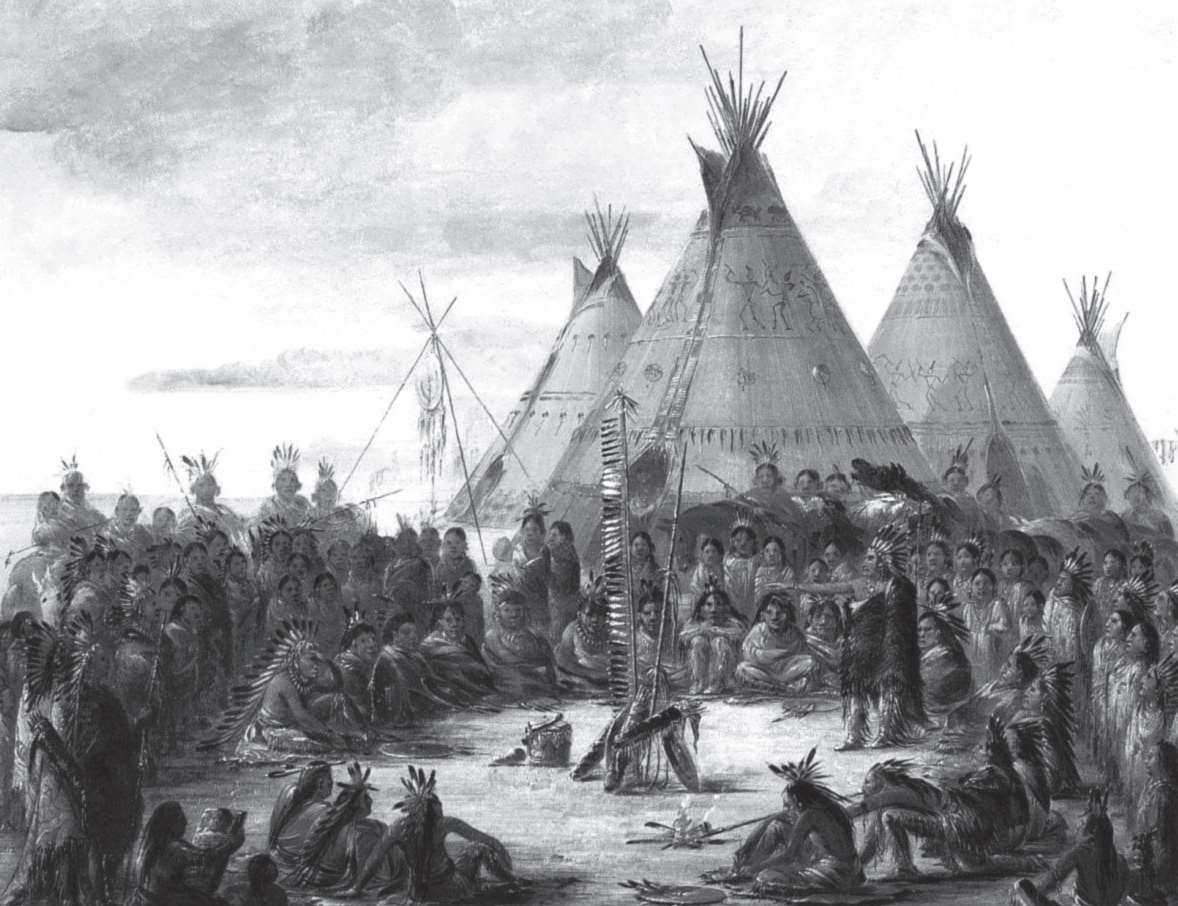
The Northwest Coast area, along the Pacific coast to Northern California, has a mild climate and many natural resources. In particular, the ocean and the region’s rivers provided almost everything its people needed—salmon, especially, but also whales, sea otters, seals and fish and shellfish of all kinds. Because of these riches, the Indians of the Pacifi Northwest were secure enough to build permanent villages that housed hundreds of people. A person’s status was determined by his closeness to the village’s chief and by the number of possessions such as blankets, shells and skins, canoes and even slaves that he had. Goods like these played an important role in the potlatch , an elaborate gift-giving ceremony.
Colonial America (1492—1763)
In 1492, the Italian explorer Christopher Columbus voyaged west from Europe looking for a sea route to India. He found the Bahamas. Spanish explorers followed and conquered present-day Mexico, whilst the Dutch and English explored the eastern coast of the USA. They were looking for wealth and influence and they left in their wake diseases devastating to the Native population. Between 50 and 90% of the Native population was killed and the once - thriving communities were in turmoil .
By 1650, England had established a dominant presence on the Atlantic coast, many of the settlers were escaping religious persecution in Europe. The first colony was founded at Jamestown, Virginia, in 1607. Earlier settlements had failed and Jamestown only survived with help from local tribes such as the Wampanoag; many of the settlers died from sickness and starvation.
The Pilgrims—radically religious Puritans —founded Plymouth, Massachusetts, in 1620 arriving from England in the ship the Mayflower. They, too, only survived with the help of natives to grow local food. To the Puritans, the new colonies were a “ divine opportunity ” to create a new society. By the early 1700s, African slaves made up a growing percentage of the population. By 1770, more than 2 million people lived and worked in Great Britain’s 13 North American colonies.
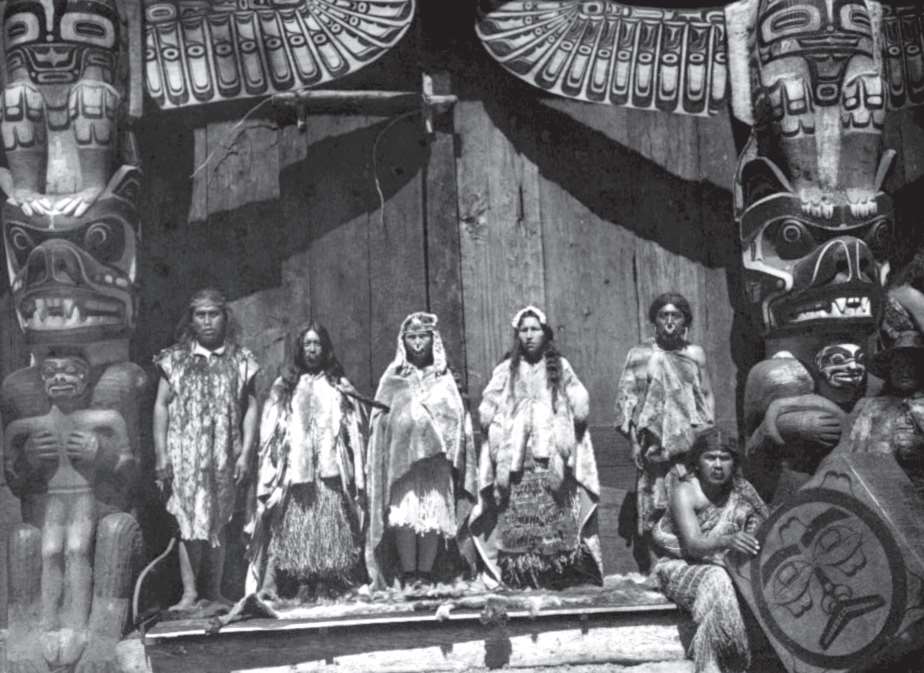
Revolutionary Period (1764—1789)
For the next two centuries, European powers competed for territory in the New World and changes in North America reflected changes in European politics. England, especially, made big profits from the colonies,and slavery was slowly legalized to support the plantation economy . The British left the American colonists to govern themselves with town meetings and assemblies; however, war in Europe had cost Britain a lot and the British tried to shift some of their taxes to the Colonies.
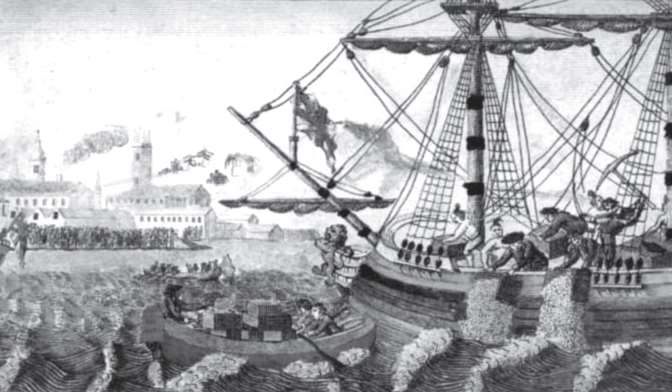
Not surprisingly, the settlers didn’t like this. The Stamp Act of 1765, which taxed all legal documents, newspapers and other documents, was met with a great uproar . The tax was repealed , but it was just the beginning of the problems between the colonists and the British. In 1773, to protest a British tax on tea, settlers in Boston dressed as Mohawks, boarded British ships and tossed their tea overboard. This event became known as The Boston Tea Party and gave its name to the Tea Party movement which still exists today as an anti-taxation political group.
In 1775, British troops clashed with armed colonists in Massachussetts. This is known as “the shot heard around the world”, and the Revolutionary War began, led by George Washington. In 1776 the Declaration of Independence was written—largely by Thomas Jefferso—explaining what the fight was for: a declaration of individual rights and republican government. Americans wanted freedom from the British Monarchy and they would fight to achieve it.
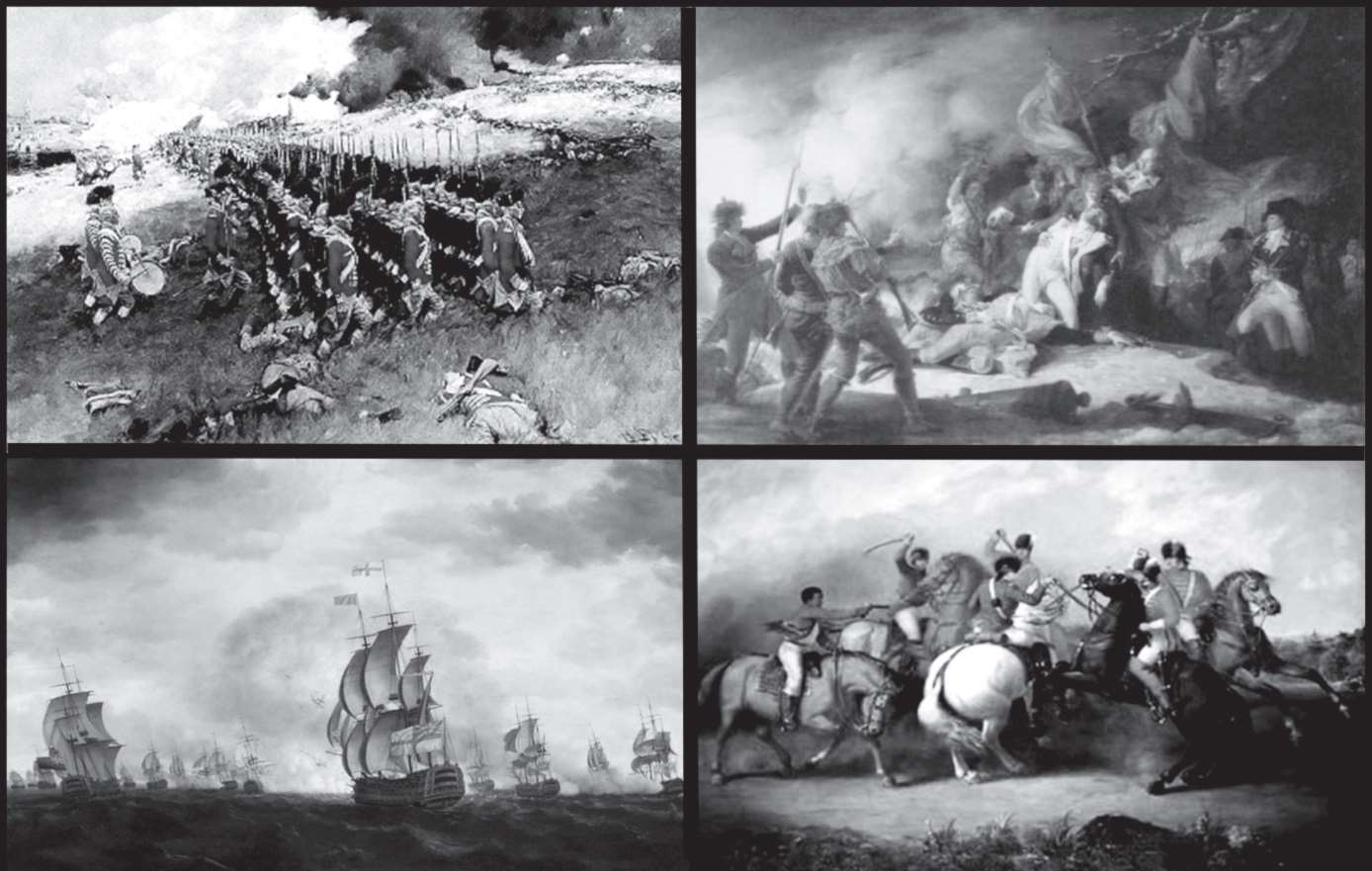
It had been difficult for the colonists to become established in this new land, and in a similar way, the war was no easy task . The Americans were poorly armed and nearly starved at Valley Forge in 1777-1778. They needed friends, and Benjamin Franklin persuaded France—enemy of the British for hundreds of years—to provide troops and sea power.
The British finally surrendered on October 19, 1781. Two years later, the Treaty of Paris formally recognized the “United States of America”. The USA was officially independent of Britain and set about establishing thei own government.
“New Nation” (1790—1828)
In the early years, the loose group of states was hardly “united” and the founding fathers had to work hard to strengthen their government. In 1787, the founders gathered in Philadelphia and drafted a new Constitution with a strong federal center and “ checks and balances ” to keep centralized power under control. In 1791, the Constitution was amended to include a Bill of Rights for citizens. These developments were a compromise on the original revolutionary values, for example rich landowners were allowed to keep their property (including slaves); Native Americans and women were excluded from politics.
Who Were the “Founding Fathers”?
The Founding Fathers were leaders in their communities—the thirteen British Colonies in North America—who were educated and wealthy. They led the American Revolution against the British Crown and established the United States of America. After winning the Revolutionary War, they signed the declaration of Independence and drafted the Constitution of United States. These were the men who installed the first ideals into American society.
Now, the Founding Fathers are American icons—with their faces on dollar notes and coins, and their achievements revered and preserved in monuments. All Americans live their daily lives in the world their ideals helped create.
America’s Founding Fathers include George Washington, John Adams, Thomas Jefferson, James Madison, Alexander Hamilton, James Monroe and Benjamin Franklin. These men, together with several other key players of their time, structured American democracy. The term “Founding Fathers” also refers to those who either signed the Declaration of Independence in 1776 or who were delegates to the 1787 Constitutional Convention and took part in drafting the Constitution of the United States.
John Adams was a member of First Continental Congress and was active in drafting the Declaration of Independence.
Thomas Jefferso played major role in the Revolutionary War, later went on to become the third American President.
George Washington became the first President of United States after playing a critical role in the American Revolution as the commander of the Continental Army.
Benjamin Franklin was a writer, diplomat and inventor before his involvement in the American Revolution. He later served as US Ambassador to France and Governor of Pennsylvania.
James Madison is regarded as the “Father of the US Constitution”. Before becoming the fourth President of the US, he wrote the first ten amendments in the US Constitution.
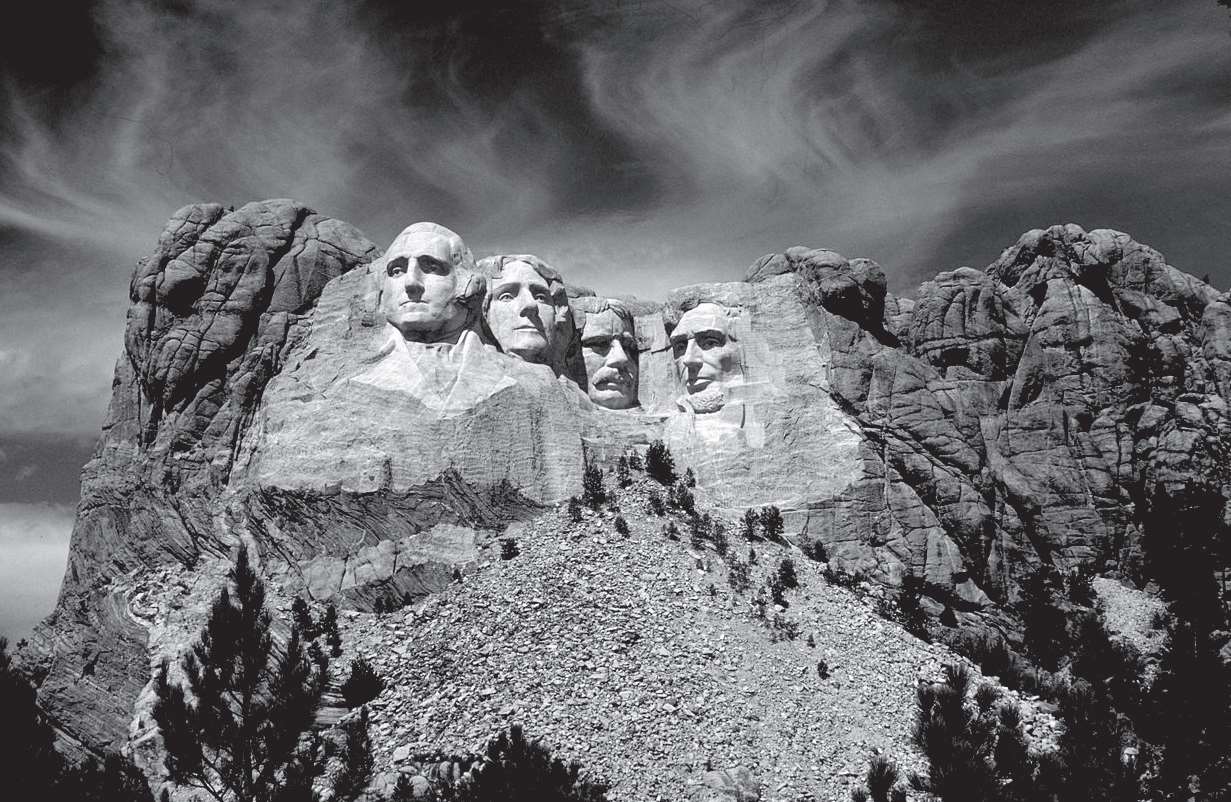
Two of these men are commemorated at the famous monument at Mount Rushmore, South Dakota—George Washington and Thomas Jefferson, along with later USA Presidents Theodore Roosevelt and Abraham Lincoln. This famous monument has appeared many times in popular culture and receives millions of visitors every year. However, it is still the subject of controversy because the land had previously been granted to the Lakota Indians.
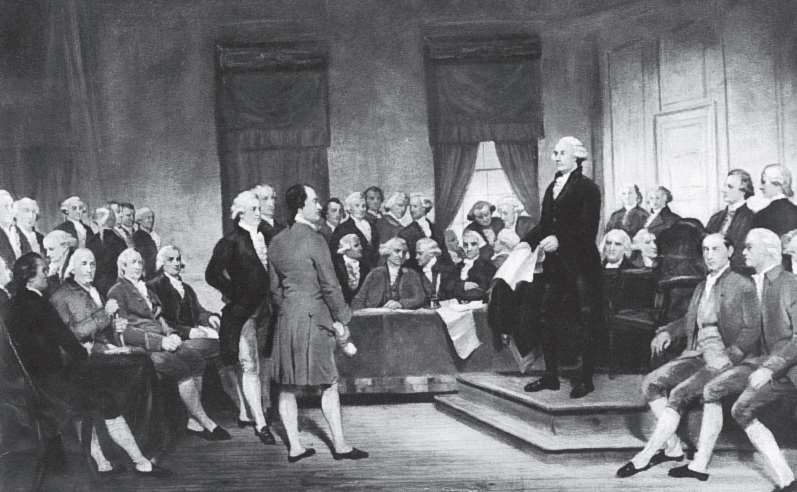
After independence, there were two major political parties: the Federalists and the Republicans. Americans had a lot to deal with during this period. They had to increase taxes to pay for the American Revolution as well as manage divided opinions over the revolution in France. However, new technology such as the cotton gin allowed agriculture to expand and commerce increased. Under President Jefferson, the country expanded westward with the purchase of the Louisiana territory for $15 million from Napoleon, the new nation now extended from the Mississippi to the Rocky Mountains. Jefferson also backed the Lewis and Clark expedition to the Pacific Ocean The War of 1812 against Britain, sometimes called the Second War of American Independence, lasted three years without much gain on either side, except that the USA vowed to avoid Europe’s “ entangling alliances ”. Instead, Americans focused on events and issues at home, and nationalist fervor increased. Many Americans felt it was their destiny that all the land should belong to their country.
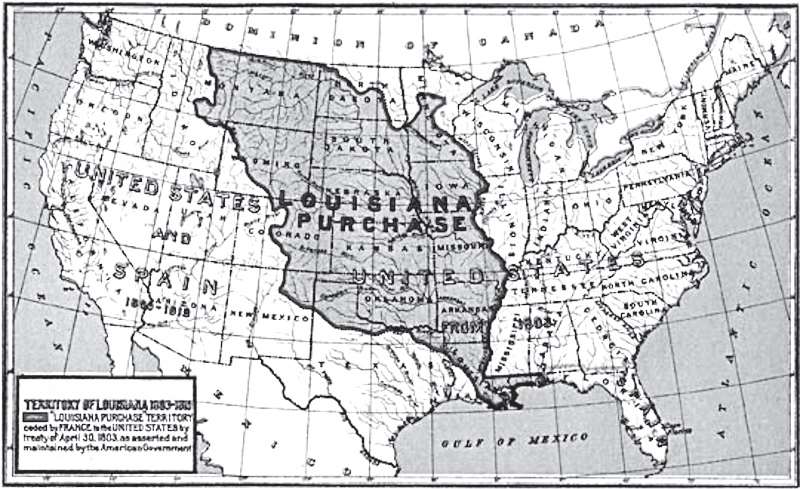
Western Expansion (1828—1859)
This idea of destiny was embraced by Presidents Andrew Jackson, James Polk, and John Tyler: to them, they were expanding for “ liberty ” and this meant going west. In 1836, a group of Texans rebelled against Mexico and in this same year the Mexicans launched an attack on the Alamo mission near present-day San Antonio. All the Texans were killed. However, many settlers were inspired to join the Texan army and ten years later the US annexed the Texas Republic and California, too.
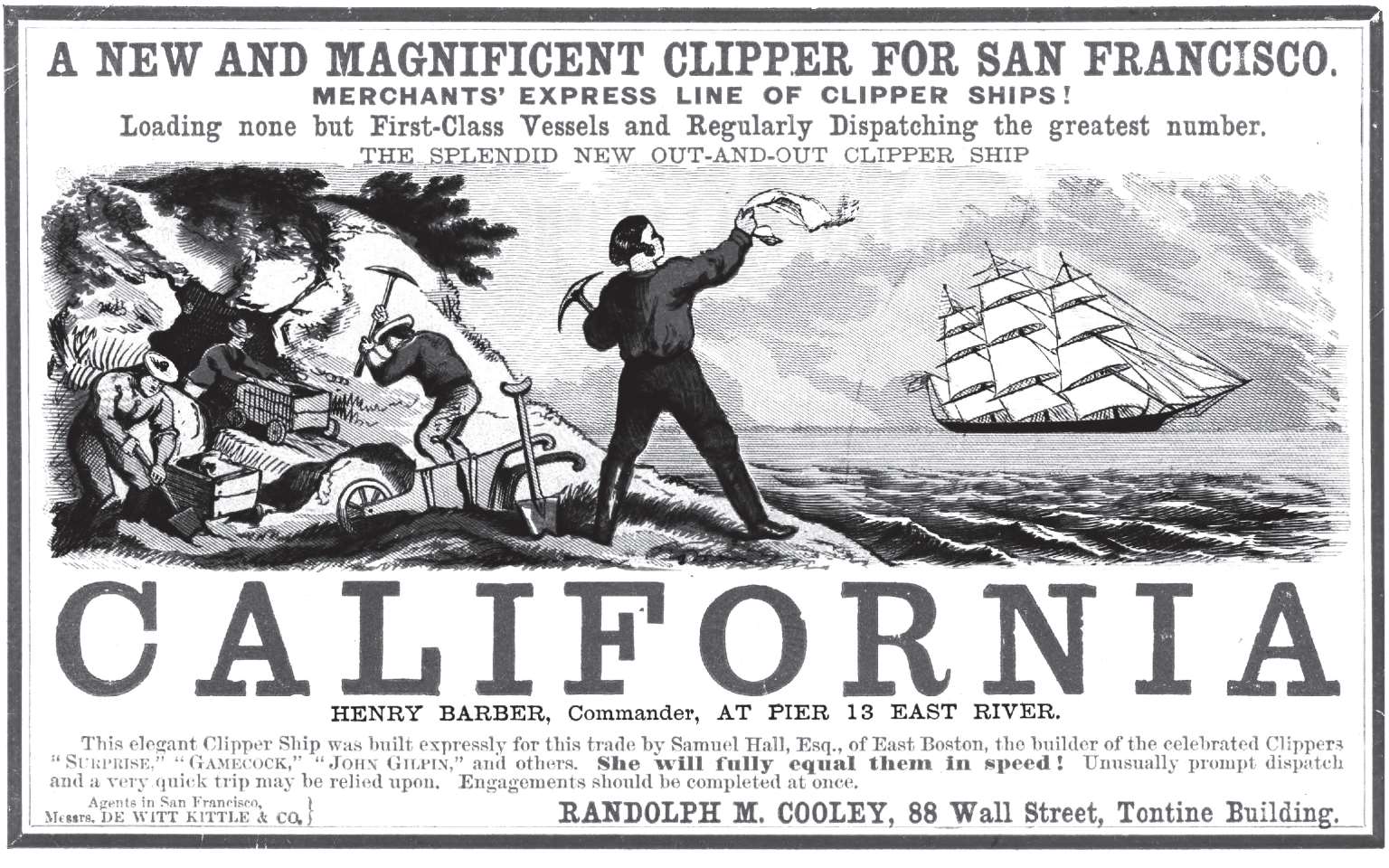
In a remarkable coincidence , only days after the signing the 1848 treaty with Mexico, gold was discovered in California. Immediately, a cross-country gold rush saw 60,000 “forty-niners” (miners) head to the Pacific coast. San Francisco’s population expanded from 850 to 25,000 and “rivers” of wagon trains headed west.
The American Civil War (1860—1865)
While pioneers headed west to California, some Americans were challenging the idea of what “liberty” in America meant in a different way. The US constitution had not ended slavery, but it had given Congress the power to approve (or not approve) slavery in new states. Southern politicians defended slavery as “natural and normal”, whereas the New York Times called it “ insanity ”. The stage was set for a battle.
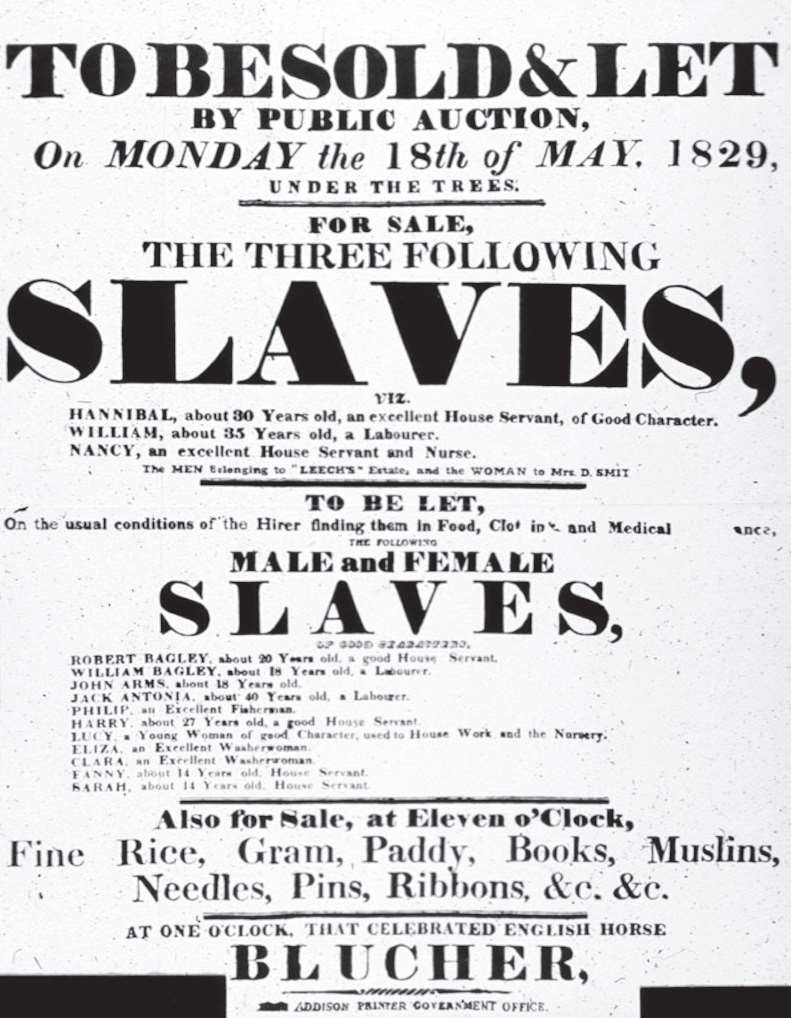
In 1860 there were more than four million slaves in the USA, mostly held by Southern plantation owners. The 1860 presidential election became a referendum on this issue, and after Abraham Lincoln—who favored limiting slavery—was elected President, 11 Southern states withdrew from the Union. They set up an independent government, the Confederate States of America. It was the nation’s greatest crisis. President Lincoln had two choices: either let the Southern states secede , or wage war to keep the union intact.
So in April 1861, the American Civil War began. It was a brutal four years with some of the most gruesome combat the world had known until that time. More than 600,000 soldiers—an entire generation —were killed; Southern plantations and towns were destroyed.
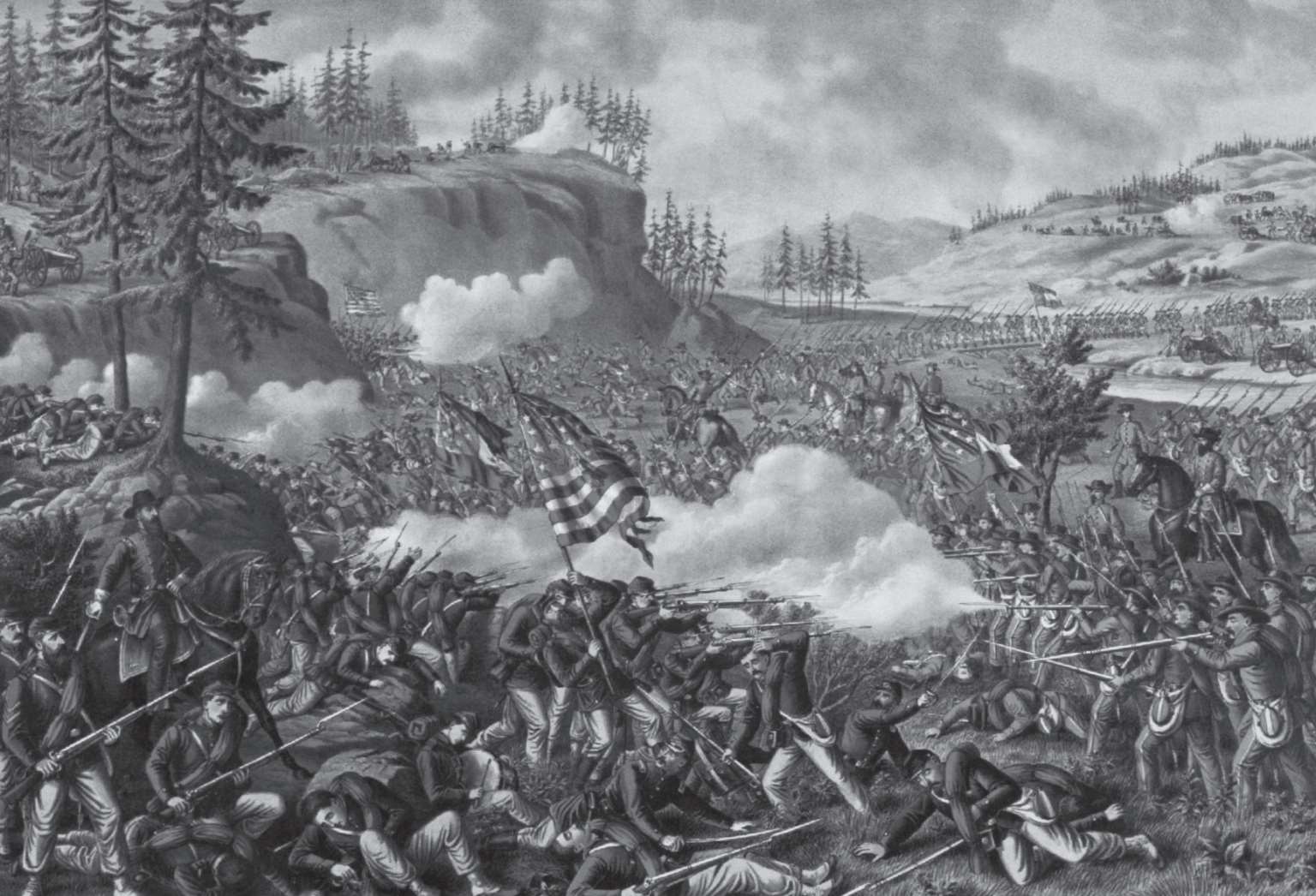
While this went on, battle by battle, Lincoln realized that if the war did not end slavery outright , all the deaths would be pointless. In 1863, his Emancipation Proclamation freed all slaves. In 1865, General Robert E. Lee surrendered. The Union had been preserved, but at a huge cost.
The Reconstruction Period (1866—1877)
The war ended on April 9, 1865, but the North’s victory was marred by the assassination of President Lincoln five days later. The new President, Andrew Johnson, faced the task of putting the divided country and bitter enemies back together. The Reconstruction Acts of 1867 laid out the process for readmitting Southern states into the Union. The Fourteenth Amendment (1868) provided former slaves with national citizenship, and the Fifteenth Amendment (1870) granted black men the right to vote. These were only the first steps, however, toward reconstructing the fragmented nation. Another move was creating the Freedmen’s Bureau that protected the legal rights of newly freed slaves and set up schools and even churches for them. Thousands of Northerners went south to work as teachers, missionaries and businessmen—the Southerners called them “Carpetbaggers”—meaning that they came south to get what they could for themselves.
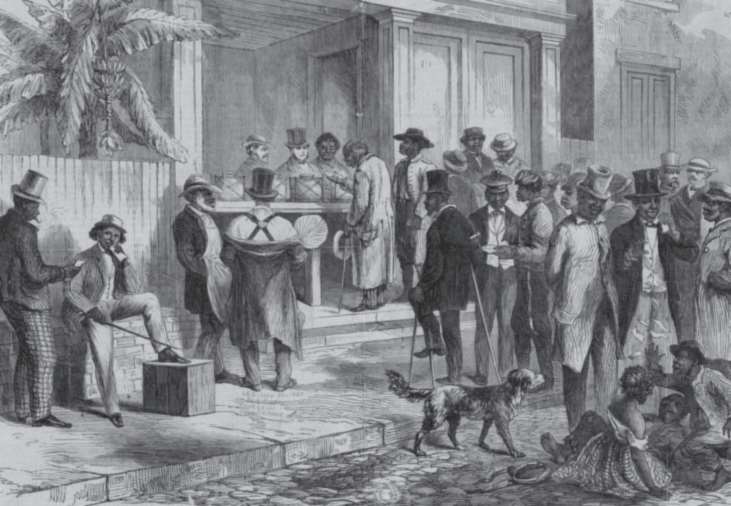
The Reconstruction era also saw the fight for civil rights in other areas, notably women’s suffrag . The first suffrage organizations were establishe in the 1870, arguing that women should have the right to play a more significan role in society by voting, holding office, and working outside thhome. Women tried to go and vote and then filed lawsuit when they were turned away. It took many years of dedicated activism before women were awarded the right to vote in 1920, when the nineteenth amendment became part of the US Constitution.
The “Gilded Age” (1878—1913)
While these struggles continued for many years—and some would argue that the battle for civil rights is by no means over—this period in American history was also marked by the growth of industry and new waves of immigrants . This was the age of cities—New York, Chicago and Philadelphia became global centers. The production of iron and steel rose dramatically and resources from the west such as lumber, gold, and silver meant that improvements to transportation became a priority . The railroad boomed; there was a high demand for steel and oil. Some businessmen became rich beyond most people’s wildest dreams—for example John D. Rockefeller (oil) and Andrew Carnegie (steel). They were known as the “ robber barons ” because they became rich through ruthless business deals. Many fortunes were made during the Gilded Age; indeed, the name of Rockefeller has entered the language as a byword for being rich beyond imagination. The wealth also supported a “gilded” way of life, for some of course, whereas particularly in the damaged south there was still great poverty. In fact, the term the Gilded Age was coined by writer Mark Twain, who recognized the serious social problems masked by the thin layer of wealth.
Gilded Age mansions can still be seen, especially around Newport, Rhode Island. Today they represent “old” money in the USA, but at this time the money was very new!
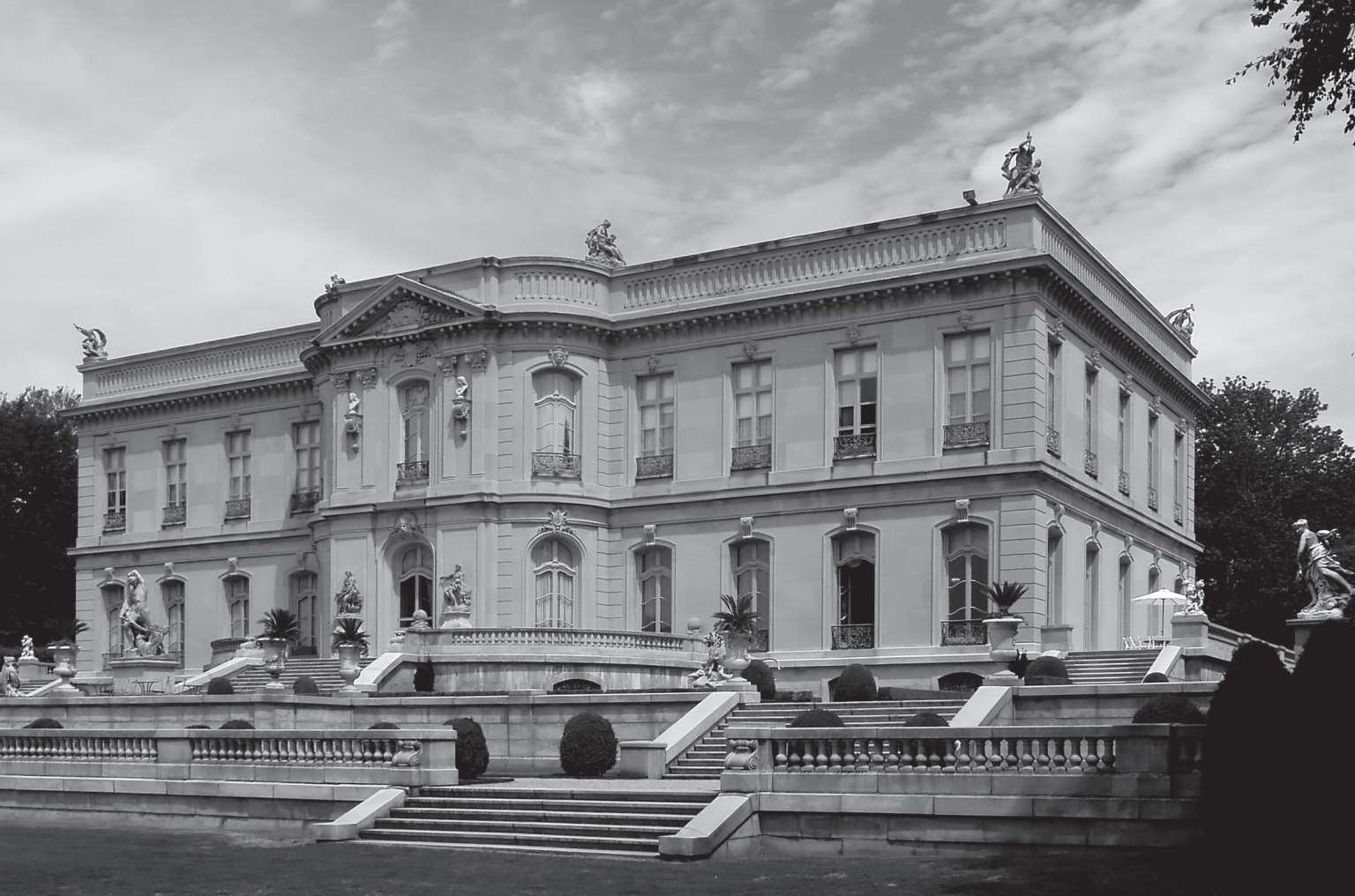
Despite the Robber Barons, the Progressive age saw a great deal of social reform, such as the prohibition of child labor and the establishment of union rights such as the eight-hour work day. Schools and hospitals were built by both government and private organizations and all over America the people were inventing and applying technology, notably Thomas Edison who changed the world with the invention of electric light, sound recording and motion pictures.
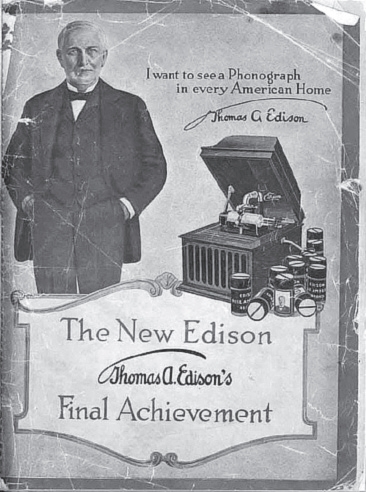
America was becoming a world power. The struggle for independence from Europe was distant in people’s memories and the belief that Americans should avoid getting involved with other countries was slowly fading. When Cuban rebels began a violent revolution against Spanish rule in 1895, and a mysterious explosion sunk the ship the U.S.S. Maine in Havana harbor, the USA entered into what diplomat John Hay called “a splendid little war” with Spain. Although the Spanish-American War ended relatively soon, the conflict highlighted issues over the ownership of the Philippines, Puerto Rico, and the Hawaiian Islands.
The First World War & Jazz Era (1914—1928)
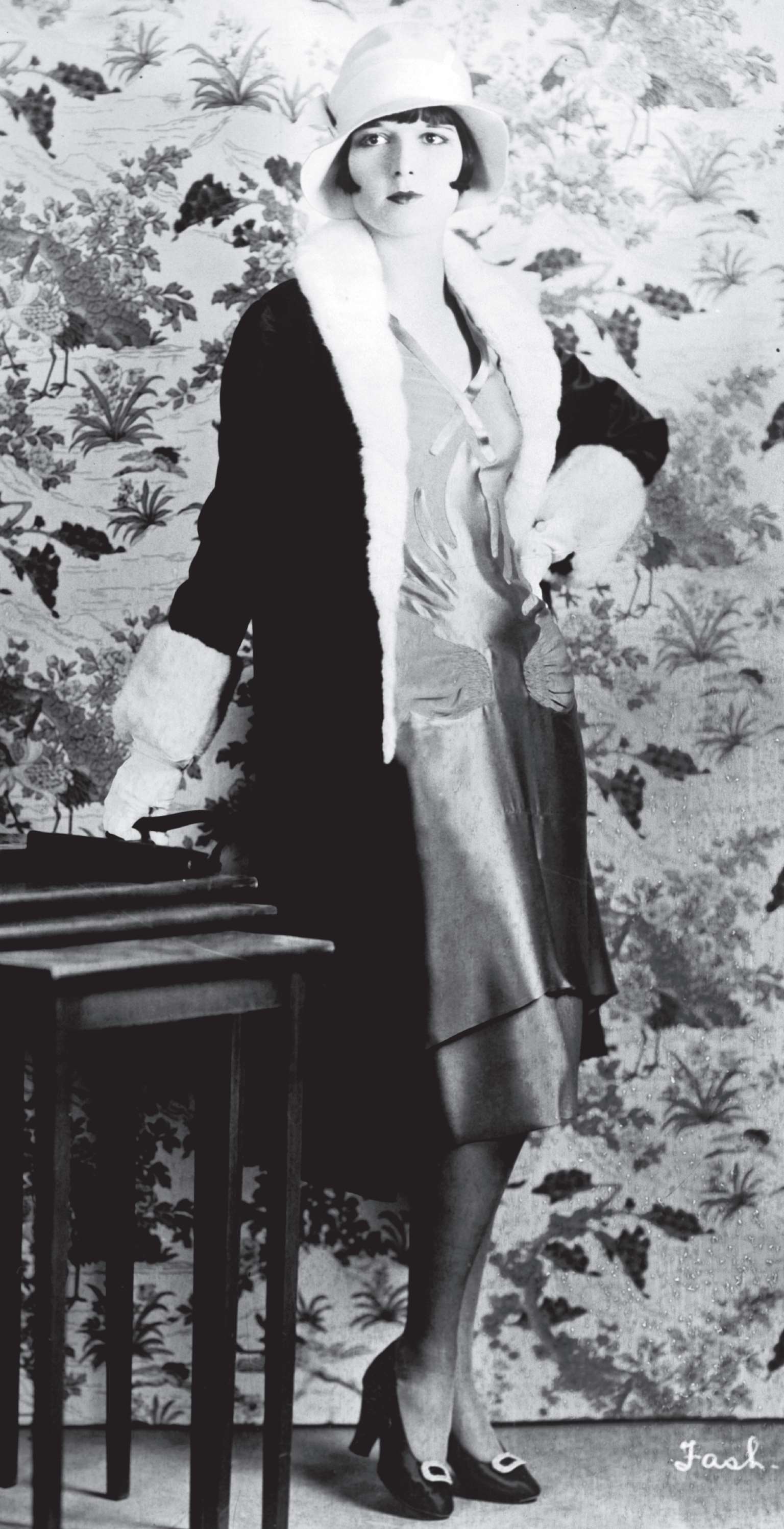
In Europe, another conflict was about to devastate the continent. The Great War, now commonly called World War I, began in 1914. Although at first the Americans resisted getting involved in this war, they supported the Allies in their fight against Germany. The US finall entered the war in 1917, and the war ended in 1918 with victory for the Allies. Foreign affairs continued to take up much of President WoodrowWilson’s attention, especially the Mexican Revolution of 1914.
The American people themselves were tired of war. The times were changing. Women had newfound freedom (after finally winning the right to vote in 1920)and the “ flappe ” was born, symbolizing freedom from restrictive dress and behavior. Many of the white population took up an interest in African American culture and cities such as New York and Chicago became cultural centers for jazz music, which had originated in the African-American community.
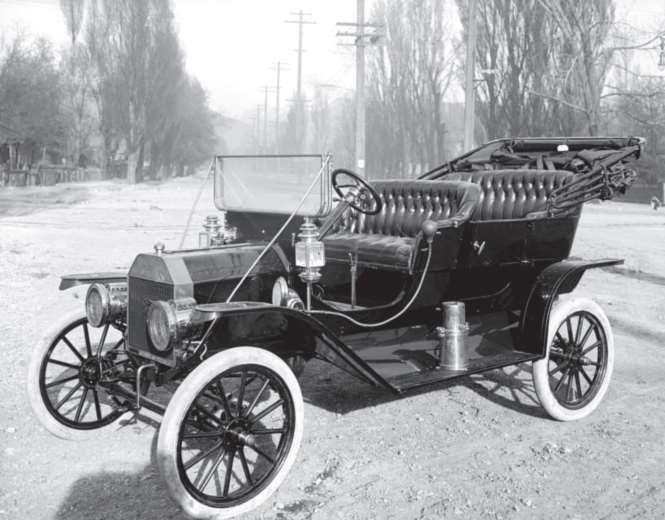
Harlem nightclubs thrived, starting the careers of numerous artists such as jazz musicians Louis Armstrong and Duke Ellington. In the northern cities it appeared that everybody had money, even shoe - shine boys and factory workers. Henry Ford produced the Model T Ford, also known as “Tin Lizzie”, or the “car for everyone”, and radios, hoovers , fridges and telephones were sold huge numbers.
By 1928 even the President, Herbert Hoover, was claiming that America had ended poverty. His words were premature . Even before “Black Tuesday”—October 29, 1929, when the US stock market crashed—there
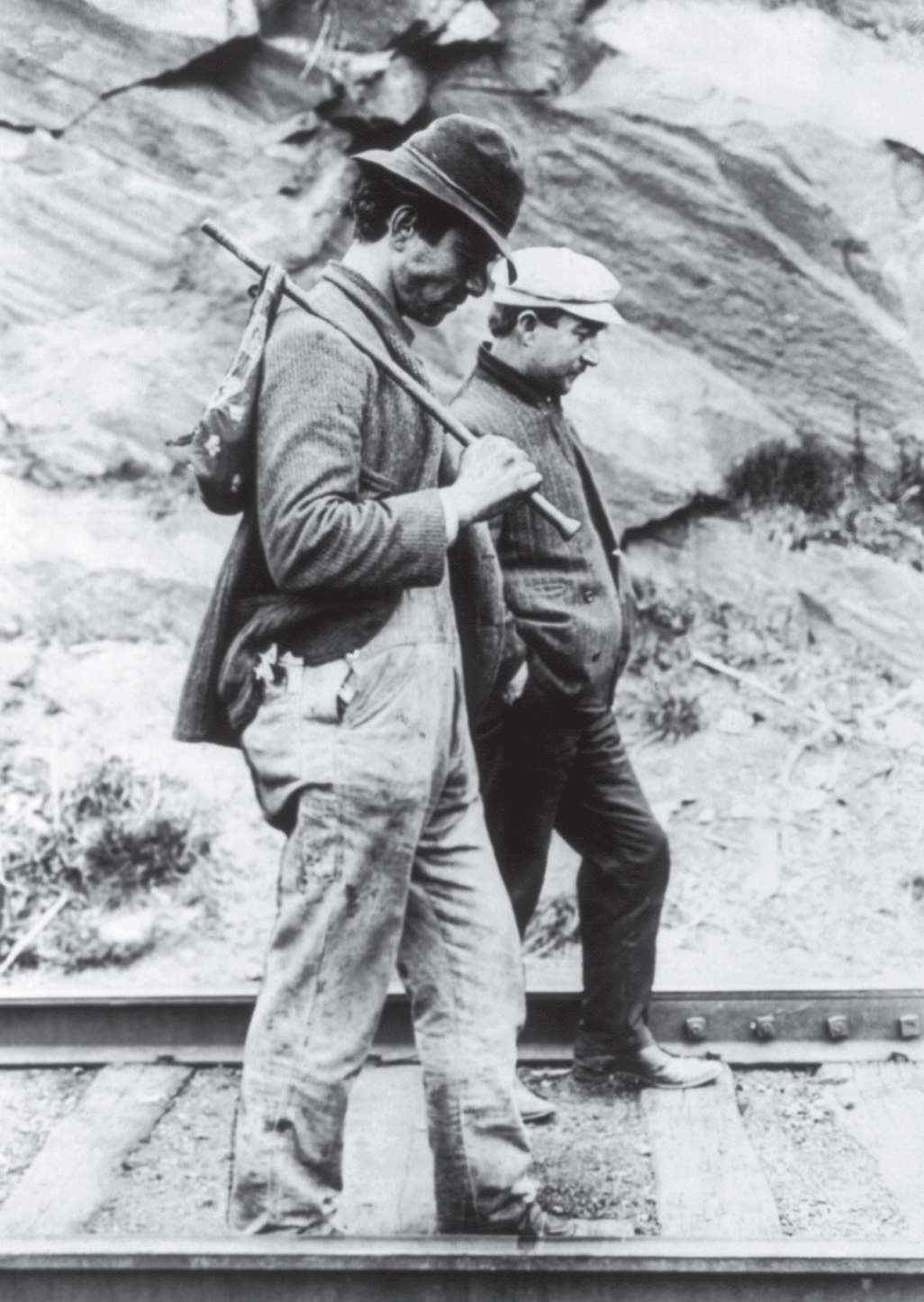
were large groups in America that were still poor, particularly the African Americans in the southern states, who worked in menial jobs for low wages. Even in the north, the good jobs went to white people. Another marginalized group were the share - croppers of south and mid-America; farmers who rented land and who were often evicted when they could not pay the rent. Single men became the legendary hobos —men who roamed the mid-American states on trains looking for part-time work.
The Great Depression & World War Two (1929—1945)
Black Tuesday marked a dark time in America’s history. Investors , worried about the gloomy global economy, started selling stocks, and panic set in. Many ordinary people had invested in stocks they could not afford to lose—perhaps dazzled by those fortunes made by the Rockefellers. People sold everything and the stock market crashed , closely followed by the U.S. economy. This officially started the Great Depression. The shockwaves of this crash were felt around the world.
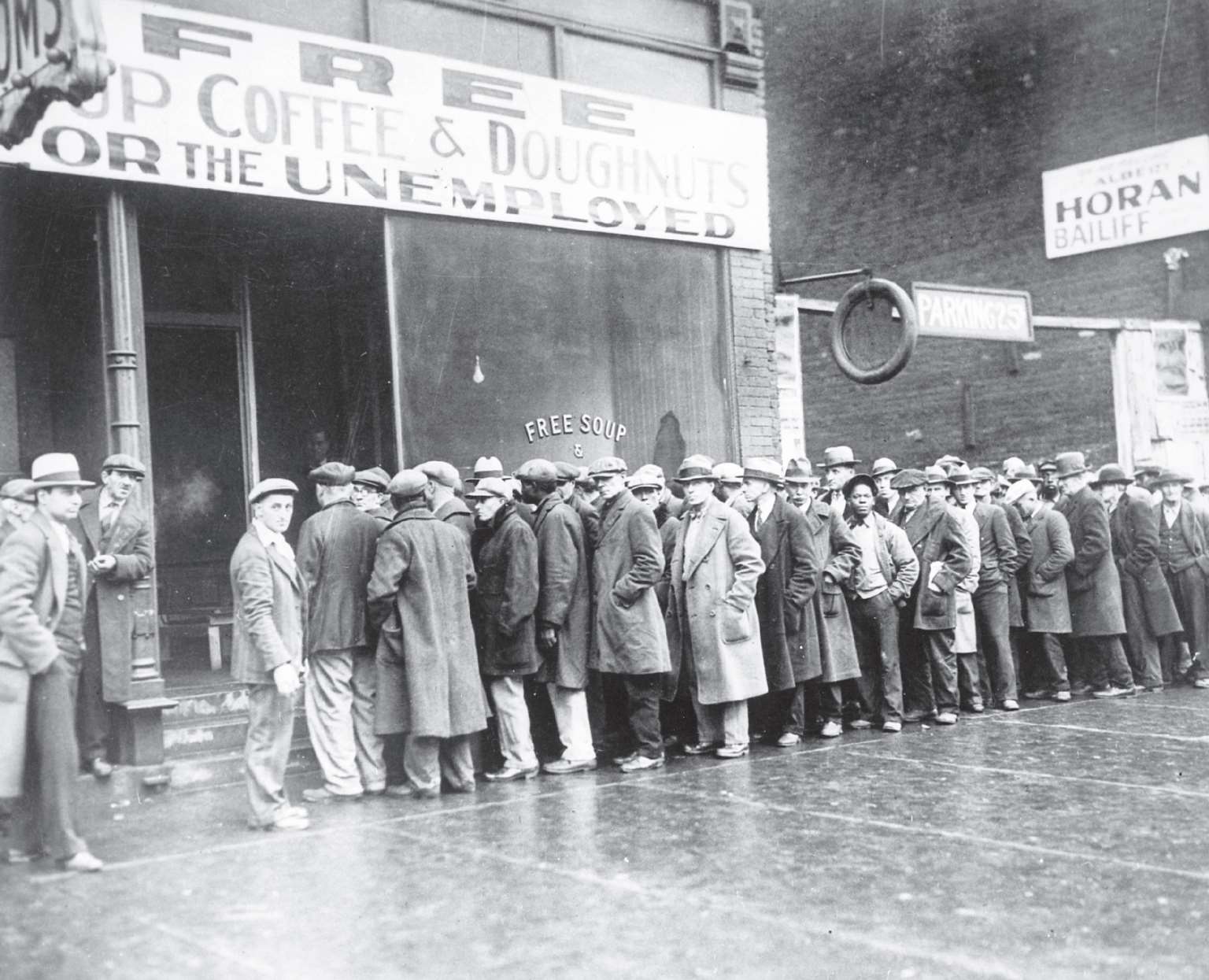
The people were not the only ones to panic. Frightened banks demanded their loans be paid back. People couldn’t pay and banks went out of business. Millions lost their homes, farms, businesses and savings and unemployment rocketed—by 1933 a quarter of the workforce was without jobs and many people became homeless. President Herbert Hoover tried to deal with the crisis but was unable to improve the situation. In 1932, Franklin Delano Roosevelt was elected president and he promised a “New Deal” for the American people. Congress created The Works Progress Administration (WPA) that offered work relief for thousands of people. Roosevelt showed that he was prepared to use the federal government’s authority for bold remedies. The United States was about to enter a new era of economic and political change.
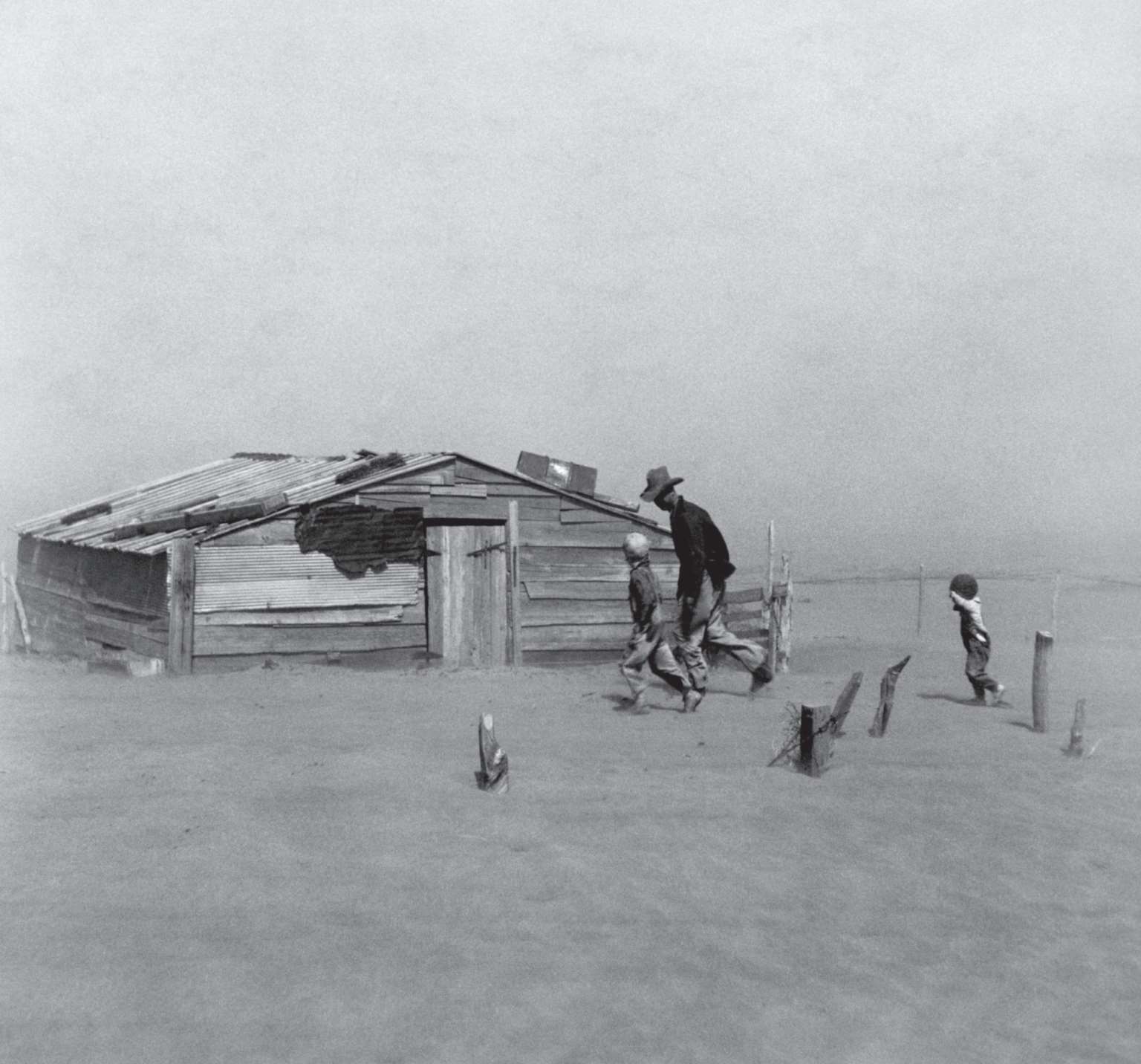
Agriculture also suffered terribly, and the suffering was increased by violent wind and dust storms that swept across the southern Great Plains in what became known as the “Dust Bowl” throughout the 1930s. Crops were destroyed, cars and machinery were ruined, people and animals were harmed. Around 800,000 people, often called “Okies”, left Arkansas, Texas, Missouri and Oklahoma during the 1930s and 1940s. Most headed farther west to the land of promise, California.
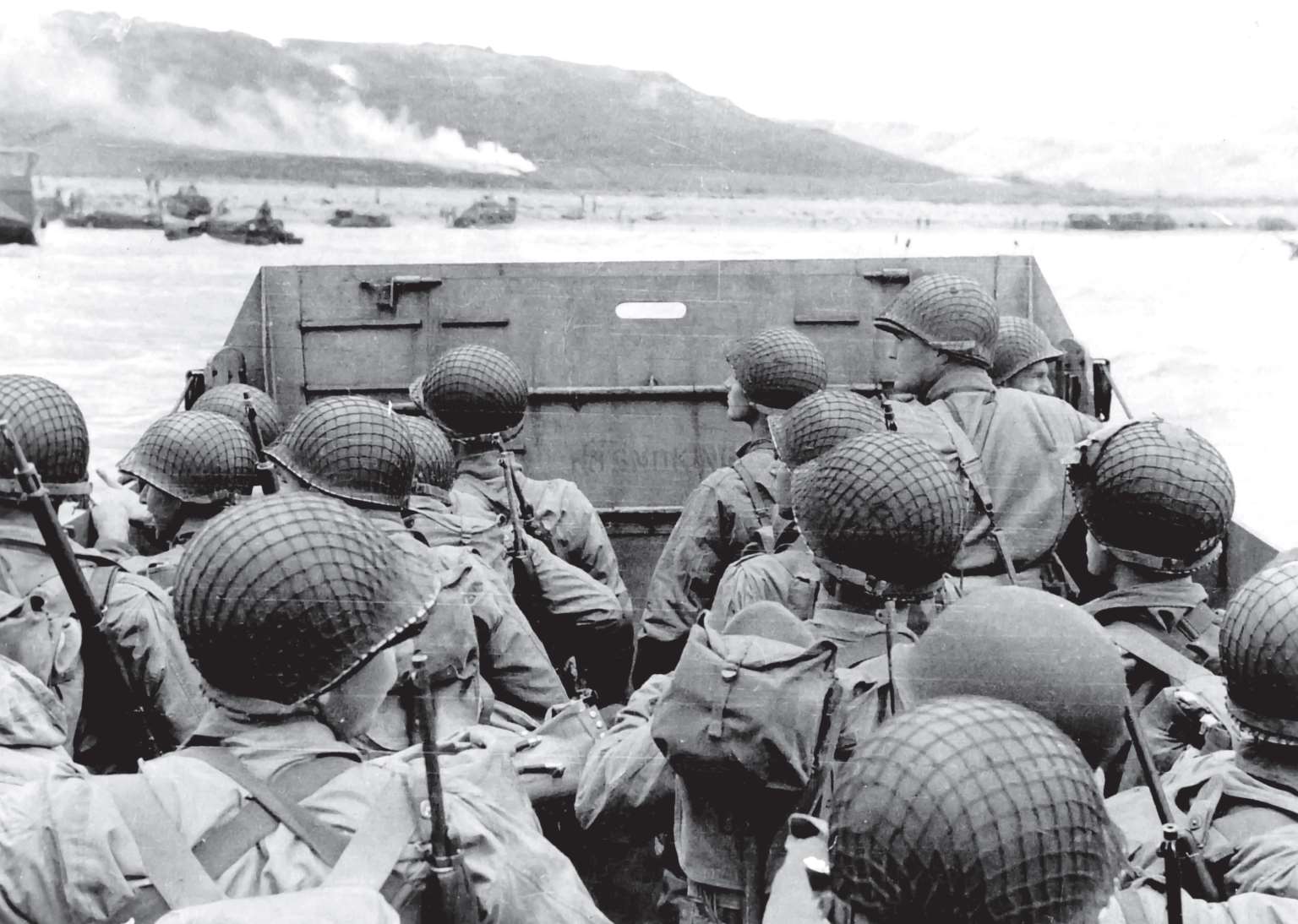
The end to the Great Depression came about in 1941 with America’s entry into World War II. Roosevelt understood that the U.S. couldn’t remain neutral and allow the fascist regimes to win in Europe. America entered the war on the side of Britain, France and the Soviet Union against Germany, Italy, and Japan. On December 7, 1941 Japan launched a surprise attack on Hawaii’s Pearl Harbor, killing more than 2,000 Americans and sinking ships. Roosevelt had the support he needed to bring America’s might and industrial power into the war.
The loss of lives in this war was huge. Over 16 million Americans served in the war with 300,000 killed and 600,000 injured. The US dealt the fatal blow to Germany with its massive D-Day invasion of France on June 6, 1944. The European part of the war ended with Germany’s surrender in May 1945. However, in Asia the war continued and America’s new President Harold Truman chose to drop experimental atomic bombs on Hiroshima and Nagasaki in August 1945. Both cities were devastated and 200,000 people were killed. The war was over. The nuclear age had begun.
The Modern Era (1946—present)
After World War II, the US enjoyed prosperity. However, there was little peace. Former allies, the communist Soviet Union and the capitalist USA competed for global domination . This was the “Cold War”—a term that refers to the chilly relations with Russia. Fear of communism was widespread, and war was only prevented by the threat of nuclear devastation. The “Red Scare” (of communism) in 1950 resulted in the McCarthy hearings. Senator Joseph McCarthy accused many Americans of being communists, which led to loss of employment for many artists, teachers, and government employees.
However, the US continent itself was not scarred by war. Using the Marshall Plan—financial aid to help Europe recover from the wa—lit up the US economy. Americans—or at least white, middle-class Americans—moved to the suburbs , drove cheap cars with cheap gas and created a “ baby boom ”.
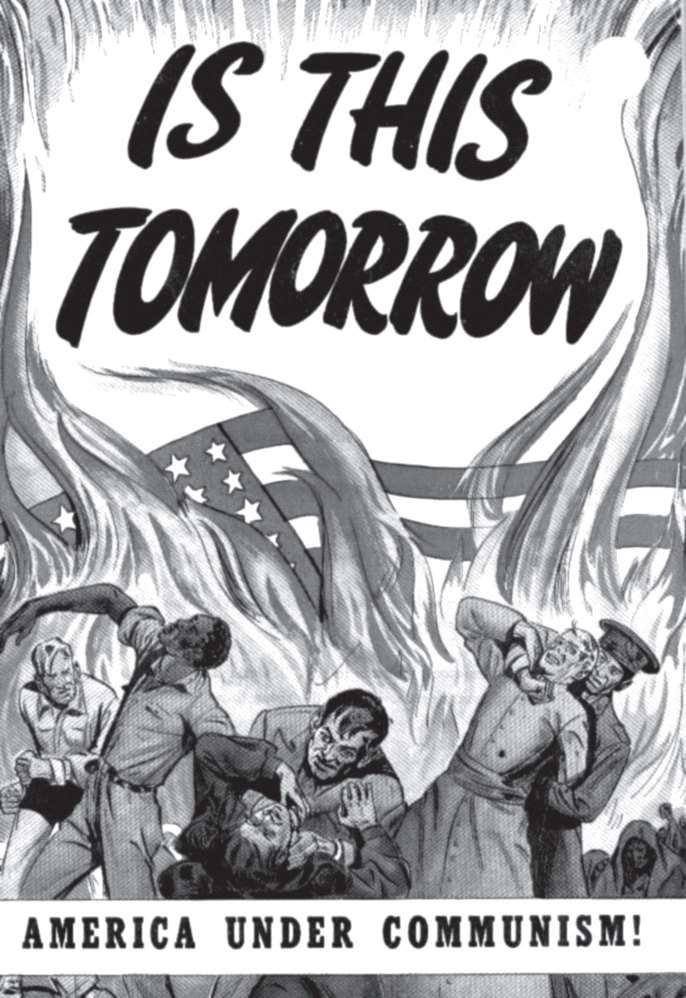
|
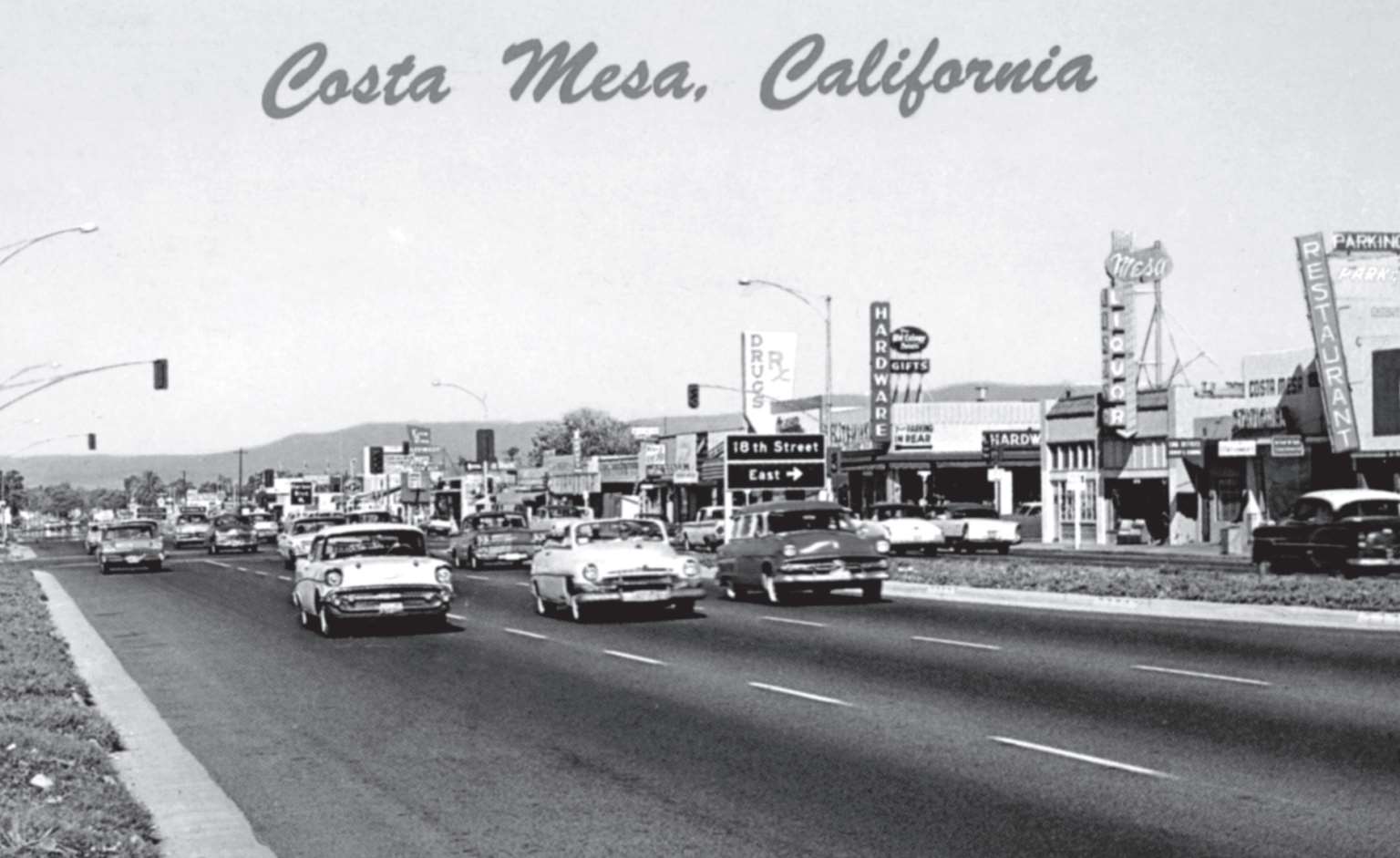
|
However, there was still much work to be done to create genuine civil rights for the black community and others. In the 1950s, AfricanAmerican preacher Martin Luther King Jr. led the movement to end segregation , aided by millions of individuals and groups who were prepared to risk their personal safety by refusing to give up seats to white passengers on buses. These were the “freedom riders” such as Rosa Parks. Martin Luther King inspired a generation with his plea to “save America’s soul” and realize the dream of justice, equality and fairness for all.
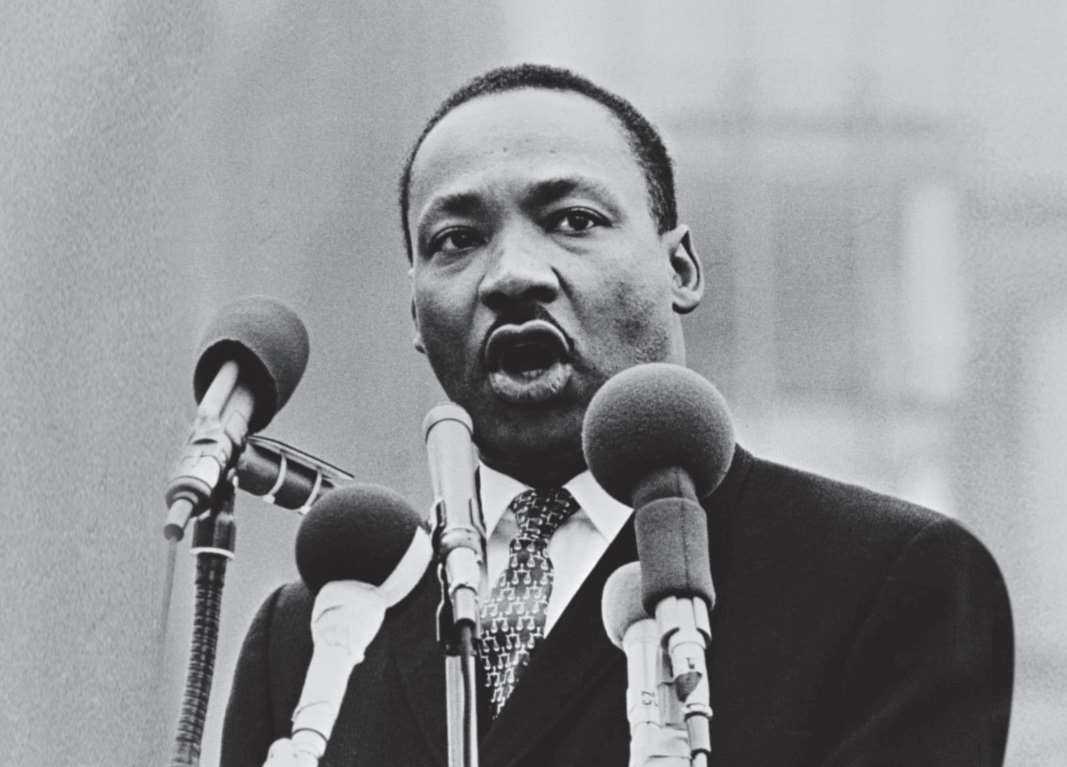
Martin Luther King’s famous “I have a dream” speech was delivered to 250,000 civil rights supporters from the steps of the Lincoln Memorial in 1963. It is one of the most famous phrases in the world and the speech one of the most influential in shaping modern America. The speech referred back to the Declaration of Independence, the Emancipation Proclamation (which had freed slaves a hundred years earlier) and the US Constitution.
King promoted non-violence and civil disobedience to progress his cause. He supported boycotts , marches and sit - ins which met great resistance from the authorities, especially in the south. These actions spurred a wave of legislation to remove racist laws.
This period saw further upheavals: flower - power , rock and roll and youth rebellion. It was a decade of “promise and heartbreak” where all the rules were broken. Young people set off to California and dreame—like Martin Luther King—of a new society.
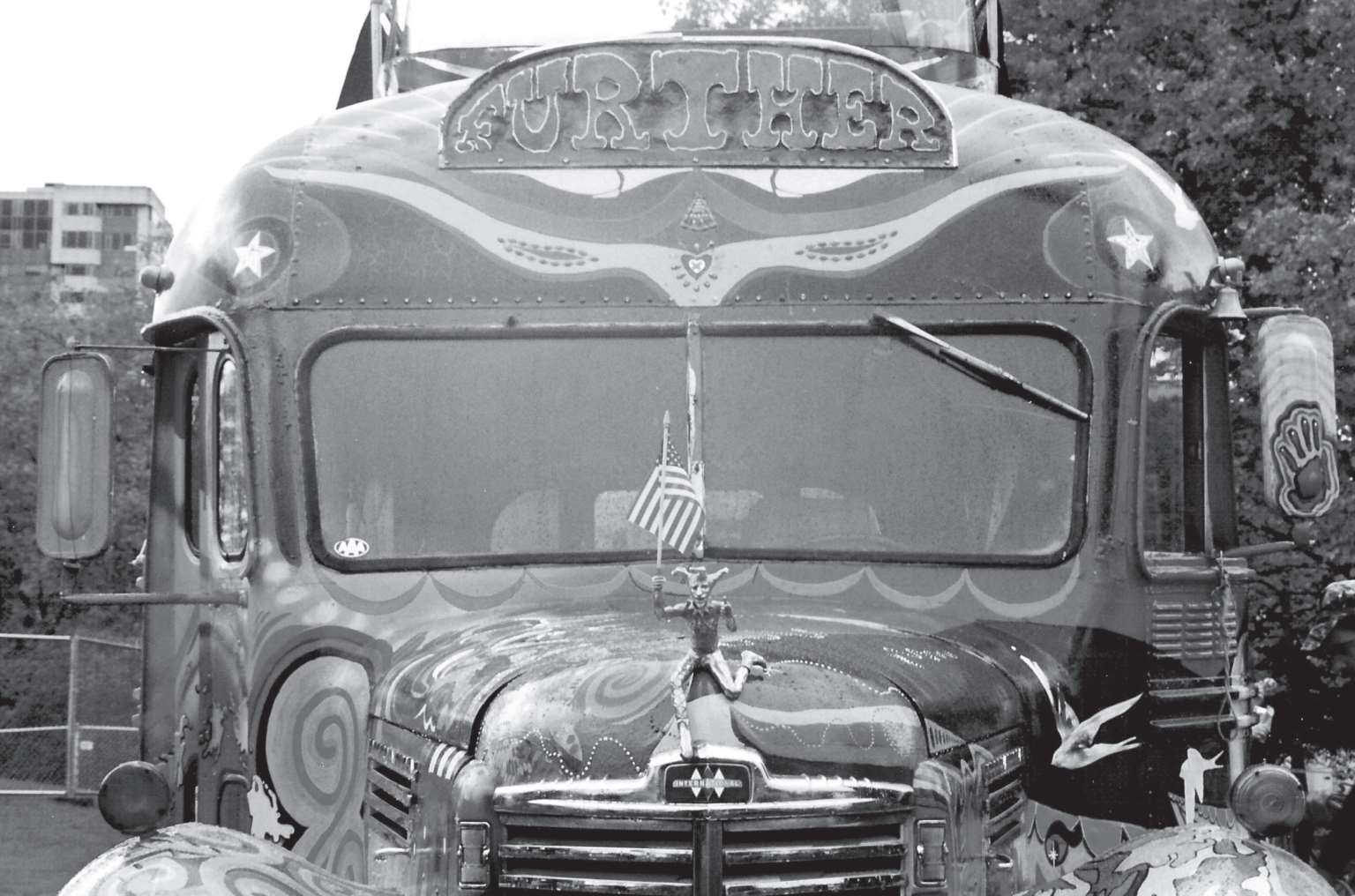
However, the revolution was over before it began. In 1963, President John F Kennedy (JFK)—whom for many was a symbol of hope—was assassinated in Dallas. Martin Luther King—who had received death threats throughout his life and told his wife that what happened to JFK would happen to him—was also shot, in Memphis at a demonstration. The US was involved in wars in Vietnam and Korea and the bombings led to more protests and unrest.
These tumultuous times saw many more well-known figures such as Eleanor Roosevelt and Richard Nixon come to the fore. In 1969 Americans put the first me—Neil Armstrong and Buzz Aldrin—on the moon, winning the “space race” between the Americans and Russians.
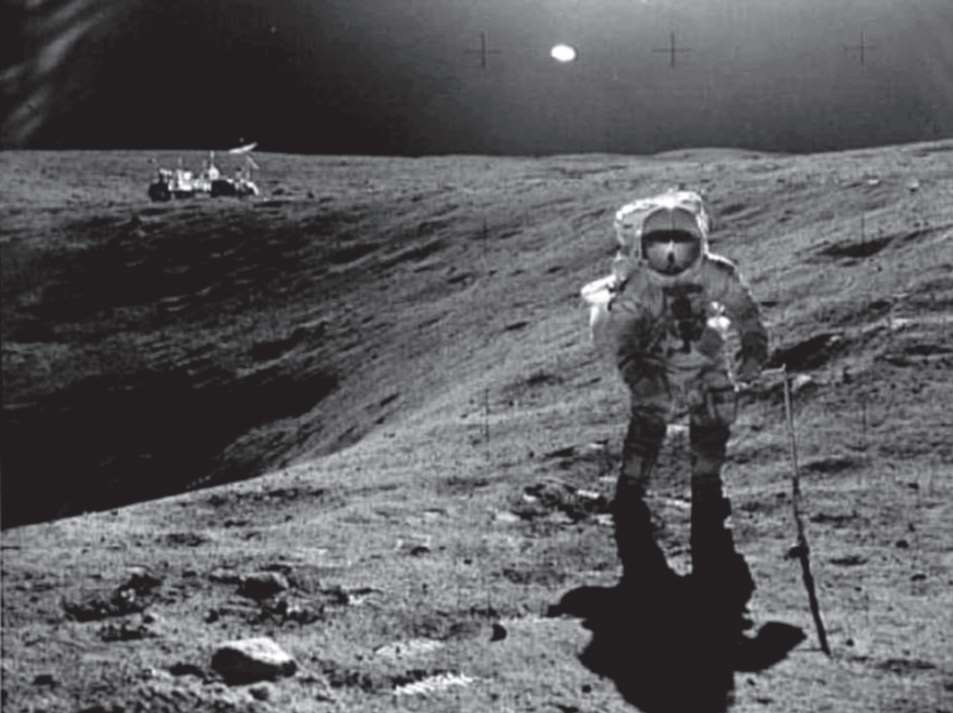
In the 1980s, the fall of communism in Russia marked the end of the Cold War and the USA became the world’s last remaining political “superpower”. Technological development dominated life with the World Wide Web created in 1991 in Silicon Valley, California. Now it is hard to imagine life without the internet and before long new generations will not have known a world without instant communications and media.
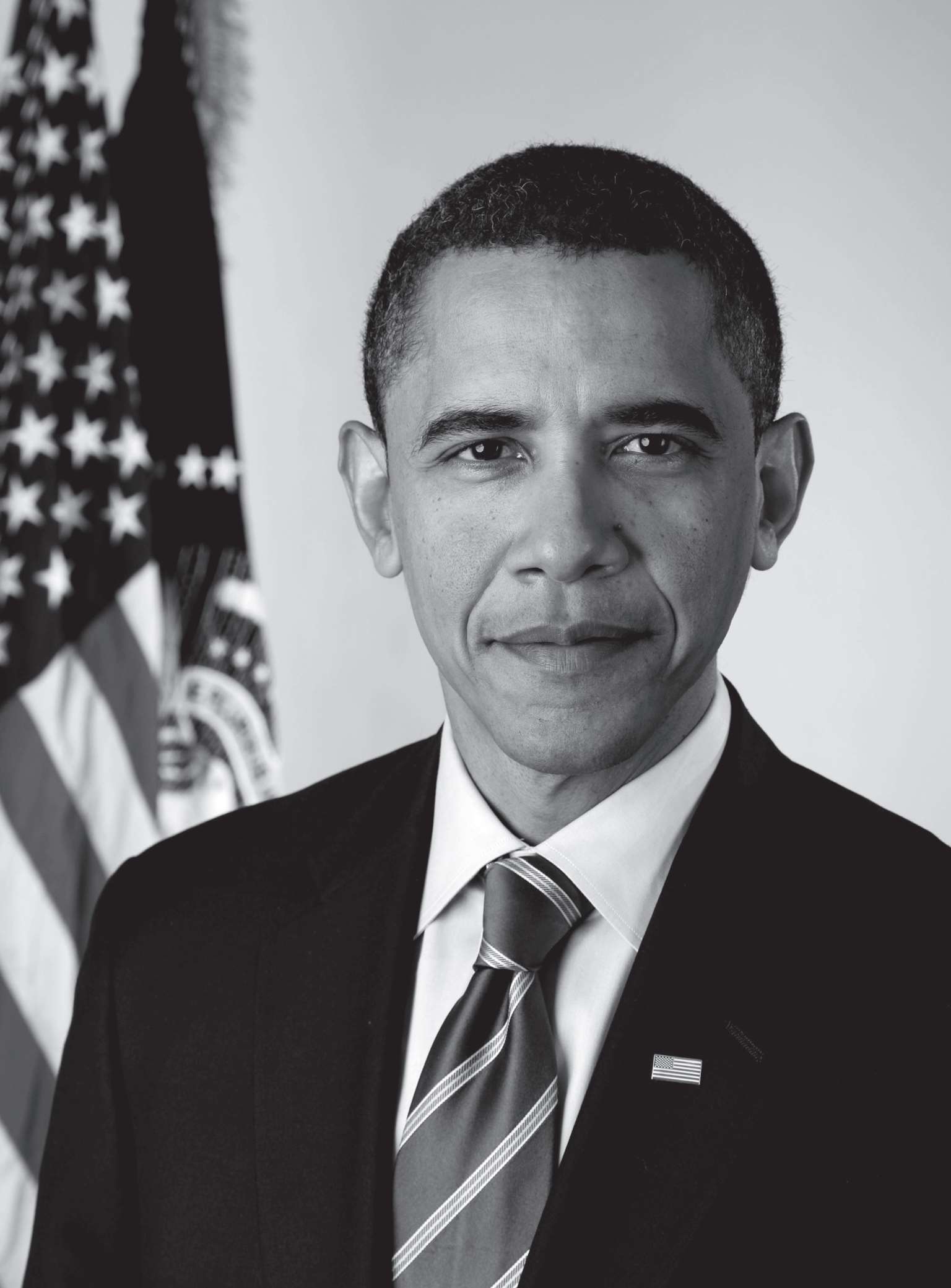
On September 11, 2001, Al-Qaeda terrorists hijacked four commercial airplanes and flew into New York City’s World Trade Centre twin towers and the Pentagon. Nearly 3000 people were killed and world relations changed instantly. In 2008, hungry for change, Americans elected Barack Obama as American’s first African-American president. At start of the new century, Obama’s biggest victory has been “Obama-care”—which has lowered the costs of healthcare to many Americans. We can only guess what history has in store for this great country over the next century but if the past is anything to go by, it will produce many more amazing people, inventions, progress and events as we move into a new era in world politics.
I. Word Lists
Abolition
The ending of slavery, making slavery illegal
Activism
To support causes by taking action
Annex(ed)
To attach or add
Aspiration
Wanting better for yourself or others
Assassination
Killing of a politician or leader
Atomic
Using power gained by splitting atoms
Baby boom
A time of peace and prosperity (when lots of babies are born)
Bitter enemies
Enemies with a lot of difference between them
Boarded
Get on a ship, plane or train
Boom
Time of expansion
Boycott(s)
To refuse to go to a place or buy a product for political reasons
Byword
A word or phrase associated with something
Carried away
To get excited, to lose control
Checks and balances
Separation of power between difference branches of government, so that no one branch has too much
Civil disobedience
To disobey laws for political reasons
Colonies
Lands overseas that are taken over by another nation
Colonists
People who populate the land taken over
Commerce
Trade
Commute
To travel to work
Competed
Took part in a competition
Compromise
The settlement of differences when everyone gives up something of what they want
Conquered
Won
Constitution
Written set of rules or principles
Contiguous
Next to each other
Cotton gin
A machine for separating the fibers of cotton from the seeds
Crashed
Fell down, collapsed
Damaging
Hurtful
Dazzle(d)
To impress deeply, to impress, to overpower with intense light
Dealt the fatal blow
Finished off, killed
Declaration
Announcement, formal statement
Destiny
The course of events, usually determined in advance
Determined
Decided
Devastate
Wreck, damage extensively
Devastating
Extremely hurtful or damaging
Diversity
Variety, lots of different types
Divine Opportunity
A gift from God
Dominant
On top of
Domination
Having power over others
Drafting
Writing the first version of
Dramatically
With drama, memorably
Elaborate
Fancy, detailed
Embraced
Took on
Employee
Person who works for someone else
Entangling alliances
Political alliances that involve responsibilities
Epitomize
To serve as a typical example
Established
Created
Establishment
Creation
Evicted
Forced off land or property by land or property owner
Expanse
Space
Expansion
Moving towards or through something
Explorer
Person who goes to new or dangerous places
Exterminated
Killed
Fascist
Person who believes in Fascism
Federal
A union of states under a central government
Filed lawsuits
Serve legal papers, take to court
Flapper
1920s fashionable woman
Flower-power
1960s peace movement, hippy era
Fragmented
Broken up
Generation
Individuals born at a similar time
Gloomy
Not good, bad news
Glossary
List that explains items in a document
Gold rush
Movement of lots of people to an area to look for gold
Gruesome
Awful, horrible
Hemisphere
Half (of the world)
Hemp
A plant
Hijacked
Taken over, captured
Hobo(s)
Men who travel the country looking for work, tramps
Homesteads
Homes on newly acquired land, farms
Hoover(s)
Equipment for cleaning floors
Immigrants
People who come to live in a country or place
Inauguration
Begin, formally
Indigenous
People who have always lived in a country or place
Influence
Able to produce actions or effects in others
Insanity
Madness
Installed
Put in
Inventions
Creations, new ways of doing things
Investors
People who put money into new projects in the hope that they will be successful
Landscapes
Places, land
Legalized
Made legal
Liberty
Freedom
Marginalized
Sent to the edges of a place or society
Mar(red)
Damage or spoil
Menial
Low level work
Might
Power
Mission
Place or organization created to spread an idea or religion
Monument
Man-made object to celebrate something
National Anthem
Song of a country
Nationalist fervor
Patriotism, passion for your country
Native Americans
Tribes that originally inhabited the USA
Neutral
In the middle, not for or again
Newfound
Discovered
Nomadic
Not settled, moving from place to place
Not only… but also
Used when presenting two pieces of information, both of which may be surprising
Nuclear
A form of power, extremely dangerous
Once-thriving
Communities that were doing very well
Originated
Started
Outright
Complete or total
Panic
Losing control
Phrases
Expressions of a few words
Pioneers
People who start something, who are the first
Plantation economy
An economy based on plantations—huge areas where one crop is grown
Players
People who are involved
Plea
An appeal, e.g. “a plea for mercy”
Potlatch
A native American sharing ceremony
Prairie
Wide open spaces (in the center of the USA)
Prehistoric
Before history, before recorded information
Premature
Early
Previously
Earlier in time
Priority
The most important thing
Prohibition
When the sale and consumption of alcohol was forbidden
Promoted
An idea or thing that is made known, and appealing, to people
Puritans
Protestant pioneers who came to America very early
Readmitting
Allowing in again
Referendum
Asking people to vote on a proposal
Religious persecution
Attacking or discriminating against someone because of their religion
Remarkable coincidence
Something surprising, especially the timing of it
Repealed
Reversed (a law, usually)
Republican
A political party in the USA, someone who does not believe in the rule of Kings and Queens
Reservations
An area of land set apart for a special purpose
Restrictive
Not allowing certain things or practices
Revered
Given great importance
Robber barons
People who flocked to the South after the Civil War to make money
Roots
Where something comes from, originates
Ruthless
Vicious, without mercy
Secede
Separate from
Segregation
Separating, creating separate services for black & white people
Shaped
Influenced
Sharecroppers
Agricultural workers
Shockwaves
Consequences, very strong
Shoe-shine boys
Boys who clean shoes for a living
Significant
Important
Similar
Something that is like something else
Sit-ins
A protest when people “sit in” a place for a political reason
Slavery
Where one person or people are owned by another, so are not paid for their labor or treated with dignity
Spurred
Pushed, prompted
Starved
To go without food
Structured
Organized
Suburbs
The outer areas of a city, residential areas
Suffrage
Who is allowed to vote
Task
Job
Technology
The application and use of inventions, engineering
Teepee (also Tipi)
A mobile structure used as homes by Native Americans
Territory
Area
Tumultuous
Very disturbing, epic
Turmoil
A state of change & confusion
Unemployment
Not having any work
Union rights
Rights to protest against working conditions
Unique
The only one of its type
Uproar
Protest, strong reaction
Version
An account of some matter
Vocabulary
Words, language
Whalebones
The bones of a whale
II. Practice Questions
• What is the National Anthem of the USA?
• What are the land and sea borders of the USA?
• When did the USA declare independence from Great Britain?
• Name some of the indigenous peoples of the USA.
• What did the American revolutionaries want in their war with Great Britain?• What are “checks and balances”?
• Name two of the men carved into the rock at Mount Rushmore.
• What two important event happened days apart in 1848 in California?
• What was the new nation’s greatest crisis?
• When did women get the vote in America?
• When did the great cities—New York, Chicago, Philadelphia—become global centers?
• When did President Herbert Hoover claim that America had ended poverty?
What happened the following year?
• What was the “dust bowl”?
• Where in American territory did Japan attack in 1941?
• What was the Cold War? The Marshall Plan? Segregation?
• Who was America’s first Africa-American president?